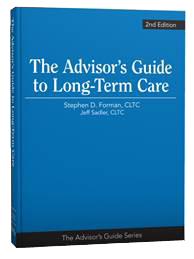The Risk of Aging
Americans are living longer lives each year. Advances in medicine continue to push the longevity wave: women's life expectancy is now 81.2 years, while men can expect to live 76.4 years. By 2020 we will see a record number of centenarians, and the trend shows no sign of letting up. But the blessing of longevity comes with risk.
- When we live a long life, we get old.
- When we get old, we become frail.
- And when we become frail, we need care.
The logic is hard to argue with. The question is, how prepared will you be? What will happen to your loved ones? To your assets? Will you be able to carry out the promises you've made?
No one has a crystal ball. You may never need care. But if you did...
The consequences to your family could be devastating.
Outliving Your Assets?
You're not alone if this is your greatest concern. After the first six months in a nursing facility, one-half of all people have spent through their wealth. Will your partner be able to continue their lifestyle, of have to give something up?
In these pages we review various ways to plan ahead for your future care-- but which will truly meet your needs?
For example... "I'll just self-insure."
Without much thought, most are already doing that. The "leverage" under this option is terrible. One major study compared "saving and investing" vs. LTC insurance and found the following:
- For an average policy costing $188 per month, 22-years of premium payments would be returned after about five months on claim (at the full daily benefit).
- To self-fund the same available benefit as the policy, one would have to set aside about $1,666 per month for the same 22-years (@ 2% compound interest).
- Those who save an amount equal to the insurance premium do not save enough to fund even average LTC costs (falling short by 20 months or more), while insurance benefits far exceed average costs (in some cases by several years or more).
This is why the "smart money" is on private insurance: the financial leverage is too attractive. Each dollar you set aside (in the form of policy premiums) can return $100's of dollars in benefits.
Information on this page sourced from "The Benefits of Long-Term Care Insurance, and What They Mean for Long-Term Care Financing," AHIP, LifePlans, November 2014.





